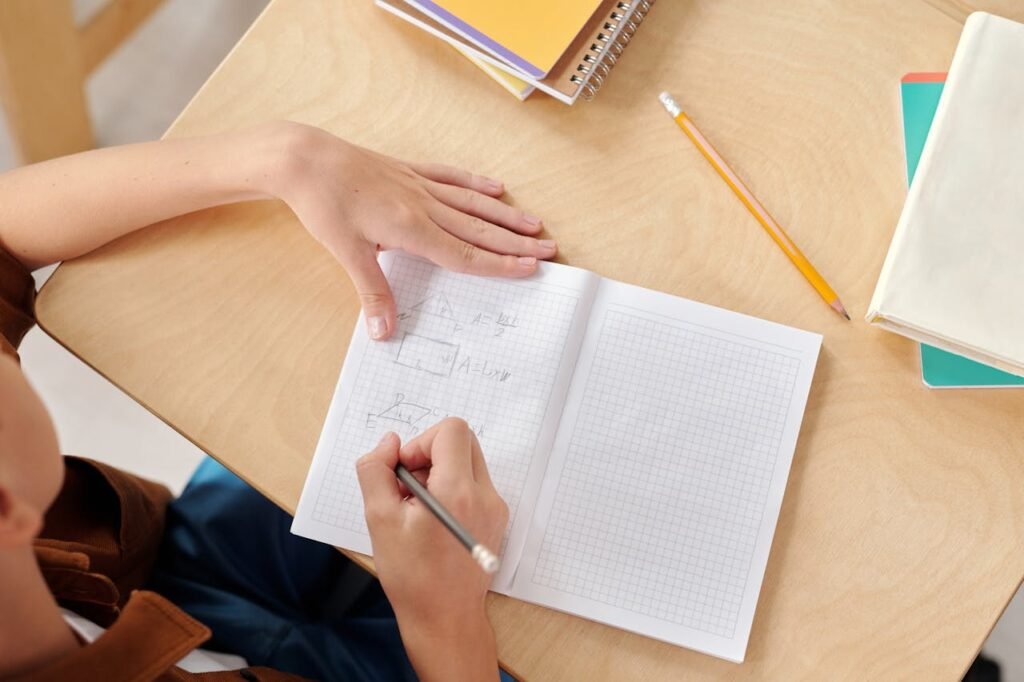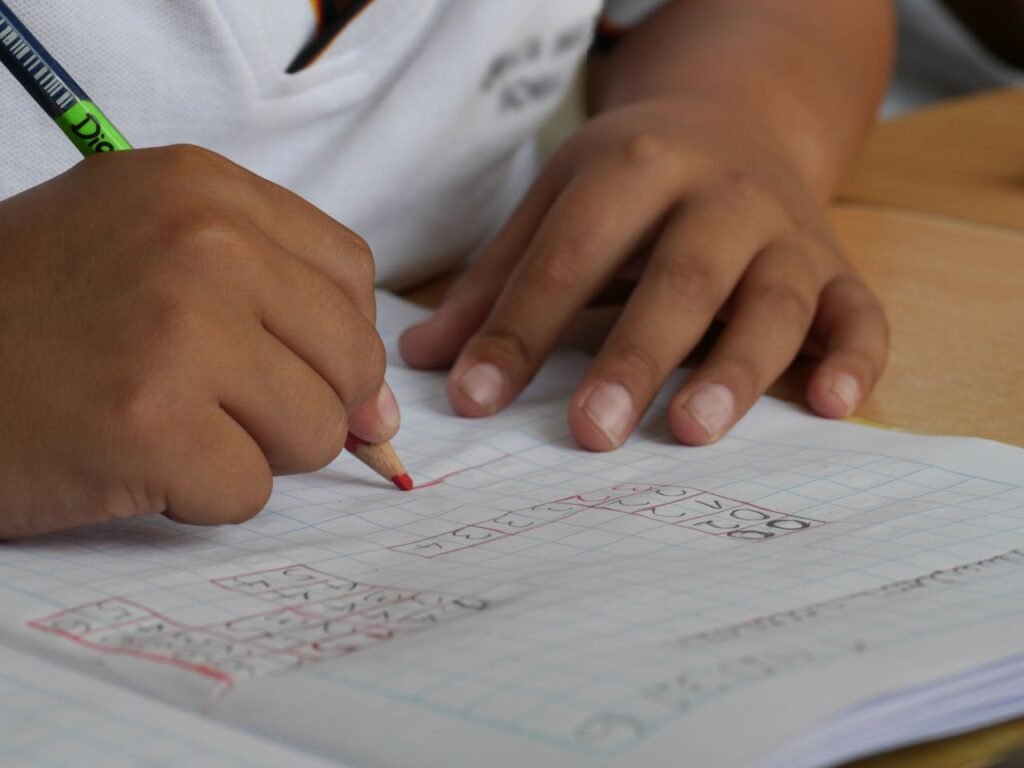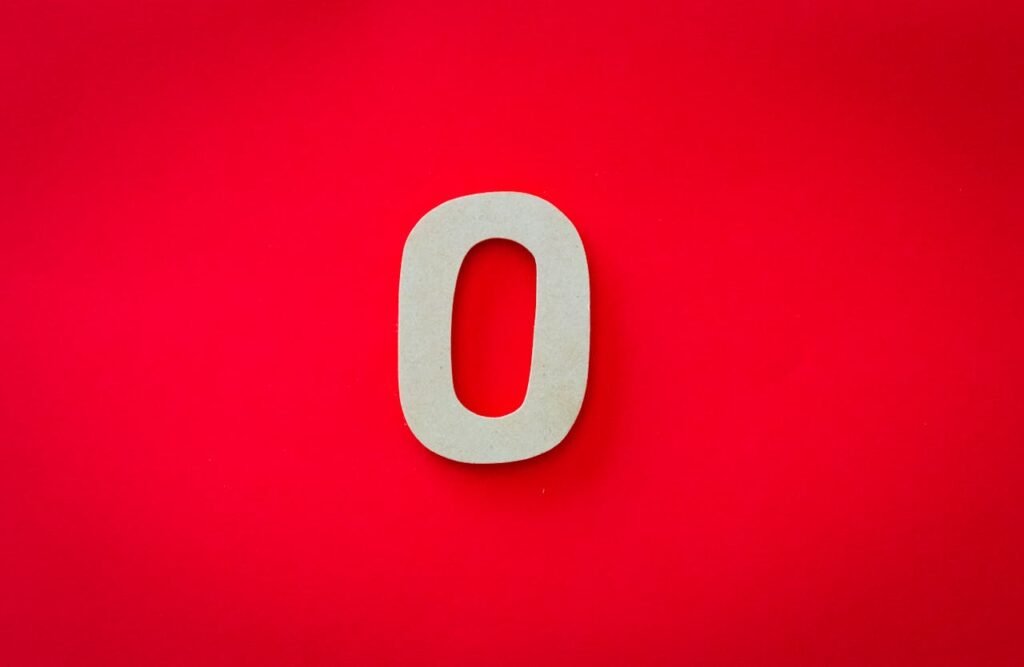If you’ve ever baked cookies from an online recipe, you might have noticed something strange — some recipes tell you to use “cups” and “teaspoons,” while others use “milliliters” and “grams.” It’s the same with measuring height: in some places, people say “I’m five feet tall,” and in others, they say “I’m one meter fifty.”
This is because the world uses two main systems of measurement — the standard (imperial) system and the metric system. Both help us measure things like length, weight, and volume, but they use different units.
For kids, learning measurements can be tricky if they come across both systems. Should they start with one? Should they learn both at the same time? Which one will help them more in school, travel, and life?
The Metric System – Counting by Tens
The metric system is the measuring system used in most of the world. If you’ve ever poured a bottle of water labeled “500 mL” or read about someone running a “5K race,” you’ve already seen it in action.
What makes the metric system special is that it’s based on tens. That means switching between units is as easy as shifting the decimal point. No odd numbers to remember, no confusing fractions — just tens, hundreds, and thousands.
Here’s how it works:
- Length: 1 meter = 100 centimeters, 1 kilometer = 1,000 meters.
- Weight: 1 kilogram = 1,000 grams.
- Volume: 1 liter = 1,000 milliliters.
It’s so simple that if you can count 1, 10, 100, 1,000… you can handle the metric system. This is why scientists, doctors, engineers, and even astronauts rely on it — it’s quick, clear, and works the same way everywhere.
Everyday examples of the metric system:
- A soda bottle in Europe might say “500 mL” instead of “16 oz.”
- Bananas in a grocery store are weighed in kilograms instead of pounds.
- A road sign might say “Speed Limit 90 km/h” instead of “55 mph.”
If you travel to almost any country outside the United States, you’ll see the metric system everywhere — in shops, on signs, and in schoolbooks.
The Standard (Imperial) System – Inches, Feet, and Pounds
The standard system (also called the imperial system) is used mainly in the United States, and in just a couple of other places like Liberia and Myanmar. Instead of meters and liters, it uses units like inches, feet, miles, ounces, pounds, cups, and gallons.
Unlike the metric system, the standard system doesn’t work in easy tens. The units have different conversion numbers that you need to memorize:
- Length: 12 inches = 1 foot, 3 feet = 1 yard, 5,280 feet = 1 mile.
- Weight: 16 ounces = 1 pound.
- Volume: 8 ounces = 1 cup, 2 cups = 1 pint, 4 quarts = 1 gallon.
These conversions can feel like a puzzle — fun for some kids, tricky for others. You can’t just move a decimal point like in metric; you need to know the exact relationship between units.
Everyday examples of the standard system:
- Height measured as “5 feet 3 inches” instead of “160 centimeters.”
- A recipe calling for “1 cup of flour” instead of “250 milliliters.”
- Road signs in the U.S. showing miles per hour instead of kilometers per hour.
While it’s less common globally, the standard system is deeply woven into American life. If your child lives in or plans to spend most of their time in the U.S., they’ll likely encounter it daily.
Where in the World They’re Used
- Metric system: The global standard. Every country uses it for science, and most use it for daily life.
- Standard system: Mainly in the U.S. for everyday tasks, though even American scientists and doctors often switch to metric for accuracy and consistency.
A famous example: In 1999, NASA lost a $125 million Mars spacecraft because one engineering team used metric while another used standard measurements. The mismatch caused the spacecraft to miss its orbit and burn up. This shows why understanding both systems — and converting between them — can be so important.
Which Is Easier for Kids to Learn?

When teaching children measurement for the first time, one big question comes up: should we start with the metric system or the standard system?
Why the Metric System Feels Simpler
The metric system is often considered easier because it follows a clear pattern — everything is based on tens. This matches the way kids already learn numbers in school.
For example:
- If you know 1 meter = 100 centimeters, then 2 meters = 200 centimeters.
- If 1 liter = 1,000 milliliters, then 3 liters = 3,000 milliliters.
It’s like counting coins — you know 10 dimes make a dollar, so 100 dimes make ten dollars.
This regular pattern means fewer numbers to memorize, and it’s quicker to teach conversions. Instead of doing tricky fractions, kids can simply move the decimal point left or right.
Why the Standard System Can Be Trickier
The standard system requires memorizing several unrelated conversion numbers:
- 12 inches in a foot
- 3 feet in a yard
- 16 ounces in a pound
- 8 ounces in a cup
There’s no repeating “ten” pattern, so it takes longer to master. Younger children may mix up conversions, especially when switching between units.
However, the standard system is still very practical for life in the U.S. — many recipes, sports measurements, and household tools use it every day. For example, kids in the U.S. might learn about feet and inches before they ever hear about meters.
Pros and Cons for Kids
Metric System
✅ Easy to learn and convert.
✅ Used in science, medicine, and most countries.
✅ Matches what kids learn in math (base 10).
⚠ May feel unfamiliar if most of their surroundings use standard.
Standard System
✅ Relevant for life in the U.S.
✅ Found in everyday measurements like cooking, sports, and height.
✅ Helps kids follow American instructions and signs.
⚠ More complex to learn because conversions don’t follow one rule.
Which Should Kids Learn First?
If your child lives in or will mostly interact in countries using metric, it makes sense to start with metric — they’ll pick it up quickly, and it will help them in science, travel, and global communication.
If your child lives in the U.S., learning the standard system first might be more practical for everyday life — but pairing it with metric early on can give them a big advantage in school and later in life.
In many cases, the smartest approach is to teach both side-by-side, showing how each system works and how to convert between them. That way, kids aren’t stuck when they encounter the other system.
Making Measurement Fun – Teaching Both Systems Side-by-Side
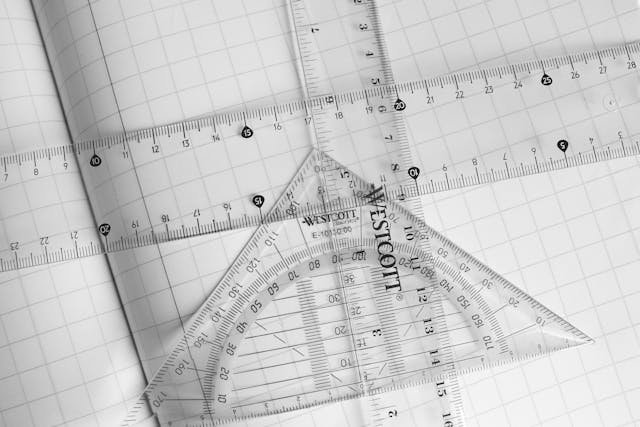
The best way to help kids learn both the metric system and the standard system is to weave them into everyday life. Instead of treating them like two separate “school topics,” mix them into activities your child already enjoys.
1. Cooking Together
Recipes are perfect for practicing measurement because they naturally use both systems, depending on the source.
- Pick a recipe from the U.S. (standard) and one from another country (metric).
- Help your child convert cups to milliliters, ounces to grams.
- Use a measuring cup with both systems marked so they can see the connection.
Why it works: Cooking is hands-on, smells good, and ends with a snack. Kids are much more likely to remember measurements when they’re linked to something delicious.
2. Double-Label Everyday Items
Around the house, label objects with both their standard and metric measurements:
- A water bottle: “16 oz / 473 mL”
- A ruler: “12 in / 30 cm”
- Your child’s height: “4 ft 6 in / 137 cm”
Why it works: Repeated exposure helps kids get used to seeing and thinking in both systems without it feeling like a test.
3. Sports and Fitness Challenges
Sports give lots of opportunities for measurement practice:
- Measure a running track in meters, then in yards.
- Time sprints in seconds and compare distances in feet and meters.
- Record jumps or throws in both inches and centimeters.
Why it works: It turns measurement into a competition — and kids often forget they’re “learning” when they’re focused on winning.
4. The Measurement Scavenger Hunt
Make a list of items to find: something about 1 meter long, something weighing about 500 grams, something about 1 foot wide. Let kids measure and record both systems for each object.
Why it works: It combines curiosity, problem-solving, and movement — perfect for keeping young learners engaged.
5. Build a Conversion Chart Together
Instead of giving them a chart, create one with your child:
- On one side, list standard units.
- On the other side, list metric equivalents.
- Decorate it with drawings or stickers for each item.
Why it works: Building the chart together makes it more personal and easier to remember, and kids have a reference they helped create.
Why Measurement Skills Matter in Real Life
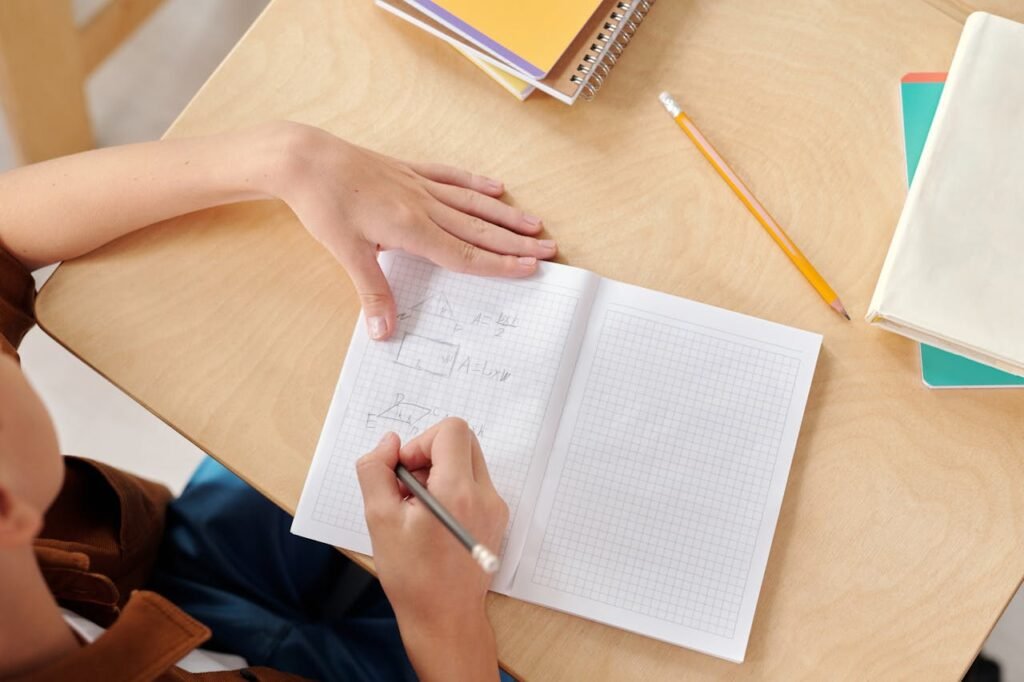
Many children think measurement is something you only use in a math test or science lab. But the truth is, measurement is part of almost everything we do — from pouring juice into a cup to building skyscrapers. Knowing how to measure accurately — and understanding both the metric and standard systems — makes life easier, safer, and more exciting.
Everyday Tasks Become Simple
Measurement sneaks into our day without us even realizing it:
- Cooking and Baking: Following a recipe means using precise amounts. Too much salt or too little flour, and you might end up with a kitchen disaster.
- DIY Projects: Whether you’re hanging a picture frame or building a birdhouse, you need to measure wood, nails, or wall space.
- Shopping: Buying curtains, rugs, or clothes often involves checking lengths, widths, or sizes. Without measurement skills, you’re guessing.
When kids can measure in both metric and standard units, they can follow any recipe, use any tool, and understand labels from anywhere in the world.
Travel Becomes Easier
Travel opens up a world of different measurements.
- Driving in another country: Road signs might show distances in kilometers, not miles.
- Buying drinks or snacks: A bottle might be labeled “500 mL” instead of “16 oz.”
- Understanding weather reports: Temperatures might be in Celsius instead of Fahrenheit.
Without these skills, kids (and even adults) can feel lost. But with them, travel becomes an adventure they can navigate confidently.
Careers Depend on It
Many future careers require strong measurement skills — and often the ability to switch between systems:
- Engineers and Architects: Convert between metric and standard to work with international teams.
- Doctors and Nurses: Measure medication doses precisely in milliliters or milligrams.
- Chefs and Bakers: Convert recipes from one country’s measurements to another’s without mistakes.
- Pilots and Sailors: Read maps and navigation tools that may use different units.
These careers can be exciting, rewarding, and well-paid — but only for those who can handle measurement confidently.
Science and Technology Depend on Accuracy
In science, even the smallest measurement mistake can ruin an experiment or cause costly accidents. In 1999, NASA lost a $125 million spacecraft because one team used metric units and another used standard units. The mismatch caused the craft to burn up in Mars’ atmosphere.
This shows that measurement skills aren’t just about getting good grades — they can have real-world consequences.
How Debsie Helps Kids Master Both Systems

At Debsie, we believe measurement isn’t something kids should just memorize for a test and then forget. It’s a life skill — like reading a map, cooking a meal, or riding a bike — that becomes part of how they understand and interact with the world. That’s why we teach the metric system and the standard (imperial) system in ways that are hands-on, fun, and connected to real life.
1. Learning by Doing – Not Just Reading
Kids learn best when they can see, touch, and try things themselves. Instead of only giving them numbers and conversion charts, our lessons involve:
- Cooking challenges where they measure ingredients in cups, ounces, milliliters, and grams — and taste the results.
- Building projects where they measure wood or cardboard in inches and centimeters to make models.
- Sports activities where they measure jump distances or running tracks in both feet and meters.
By actively doing, kids remember far more than if they just read about measurements in a book.
2. Showing the “Why”
Many kids ask, “Why do I need to learn this?” At Debsie, we always connect lessons to real-world uses:
- We show how travelers use kilometers in France and miles in the U.S.
- We explain why doctors use milliliters for medicine even in countries that measure weight in pounds.
- We talk about how scientists use metric so they can work with teams from all over the world.
When kids understand why something matters, they’re more motivated to learn it well.
3. Building Confidence in Conversions
Switching between metric and standard can feel like translating between two languages. Our teachers break down conversion into clear, repeatable steps and give plenty of practice through:
- Fun timed challenges to see how quickly they can convert miles to kilometers or grams to ounces.
- Real-life scenarios like “You’re cooking for an international guest — can you adjust the recipe?”
- Group games where kids solve measurement puzzles together.
The result? They don’t just “kind of know” conversions — they can do them confidently anytime.
4. Cross-Subject Learning
Because Debsie has expert teachers in math, science, geography, and history, we link measurement lessons across subjects:
- In geography, kids learn how map scales use kilometers or miles.
- In history, they explore how different measurement systems developed over time.
- In science, they see how precise measurement keeps experiments accurate.
This integrated approach shows that measurement is not an isolated skill — it’s part of everything.
5. Skills for Life, Not Just School
By the time students finish our measurement lessons, they can:
- Read and understand measurements from anywhere in the world.
- Switch between metric and standard without hesitation.
- Apply measurement skills naturally in cooking, travel, sports, and problem-solving.
These are skills they’ll use for decades, whether they become engineers, teachers, doctors, chefs — or just confident, capable adults.
Fun Challenges to Help Kids Practice Both Systems at Home

Measurement doesn’t have to be a sit-down, pencil-and-paper lesson. In fact, the more kids move, imagine, and laugh while practicing, the more naturally the skill sticks. Here are some playful, practical ways to help your child master both the metric and standard systems without it feeling like “math class.”
1. The Double-Measure Game – See It Two Ways
Pick a few items around the house — a cereal box, a pillow, a toy car.
- First, measure them in inches or feet using a standard ruler or tape measure.
- Then, measure the same item in centimeters or meters with a metric ruler or tape.
Have your child write down both numbers and circle which is larger. Talk about why — for example, 30 cm and 12 inches describe the same thing, but one number looks bigger because the units are smaller.
Why it works: Kids start to see how the two systems “translate” and how the same object can have two very different numbers attached to it.
2. Recipe Remix – Cooking in Two Languages
Choose a favorite recipe, like pancakes or cookies. If it’s written in the standard system, challenge your child to rewrite it in metric. If it’s in metric, switch it to standard.
Example:
- “2 cups of flour” becomes “about 240 mL.”
- “500 mL of milk” becomes “about 2 cups.”
Use measuring tools that have both systems marked so they can check their work as they cook.
Why it works: Cooking is naturally hands-on and gives instant feedback. If measurements are wrong, the results won’t taste the same — making accuracy matter.
3. International Travel Role Play – Pretend You’re Abroad
Create a make-believe trip to another country. Choose a place — France, Japan, South Africa — and research a few real distances, temperatures, and product weights from that country.
- Write them in the metric system (as they would appear there).
- Then have your child “translate” them into the standard system as if they were explaining it to someone back home.
For extra fun, make boarding passes, draw maps, and create “menus” with prices and serving sizes in both systems.
Why it works: Kids connect measurements to culture and real-world experiences, which makes the skill feel important and exciting.
4. The Conversion Race – Fast, Fun, and Competitive
Write a list of 10 random measurements in one system — for example, “2 liters,” “150 cm,” “3 kg.”
- Challenge your child to convert them all to the other system.
- Use a timer and see if they can beat their best time in each round.
Add silly “bonus” rounds — for example, convert “the height of your dog” or “the length of your jump” to keep them laughing while learning.
Why it works: Timed challenges add energy and make kids focus, while the variety of examples keeps them from memorizing instead of understanding.
5. The Measurement Hunt – A Moving, Thinking Game
Give your child a scavenger hunt list with measurement clues, like:
- “Find something about 1 meter long.”
- “Find something weighing about 2 pounds.”
- “Find something about 10 centimeters wide.”
Once they find it, have them measure it in both systems to see how close they were.
Why it works: Kids are up and moving, using estimation first and accuracy second — both important real-life skills.
Final Thoughts – Which System Should Kids Learn First?
So, metric or standard — which should your child start with? The truth is, the answer depends on where they live, what they’ll use most often, and how much you want to prepare them for the future.
If you’re raising a child in the United States, the standard system will be part of their everyday life — from sports scores to recipes. But even here, the metric system is everywhere in science, technology, and travel. If you live in another country, metric will be the default for school, shopping, and maps — but knowing the standard system can still be useful when reading U.S.-based materials.
That’s why the smartest approach isn’t to choose one over the other, but to teach both from the start. By learning them side-by-side, kids don’t have to “unlearn” anything later. Instead, they grow up fluent in both systems, ready to cook from any recipe, read any sign, and work with anyone, anywhere in the world.
Read Next:
